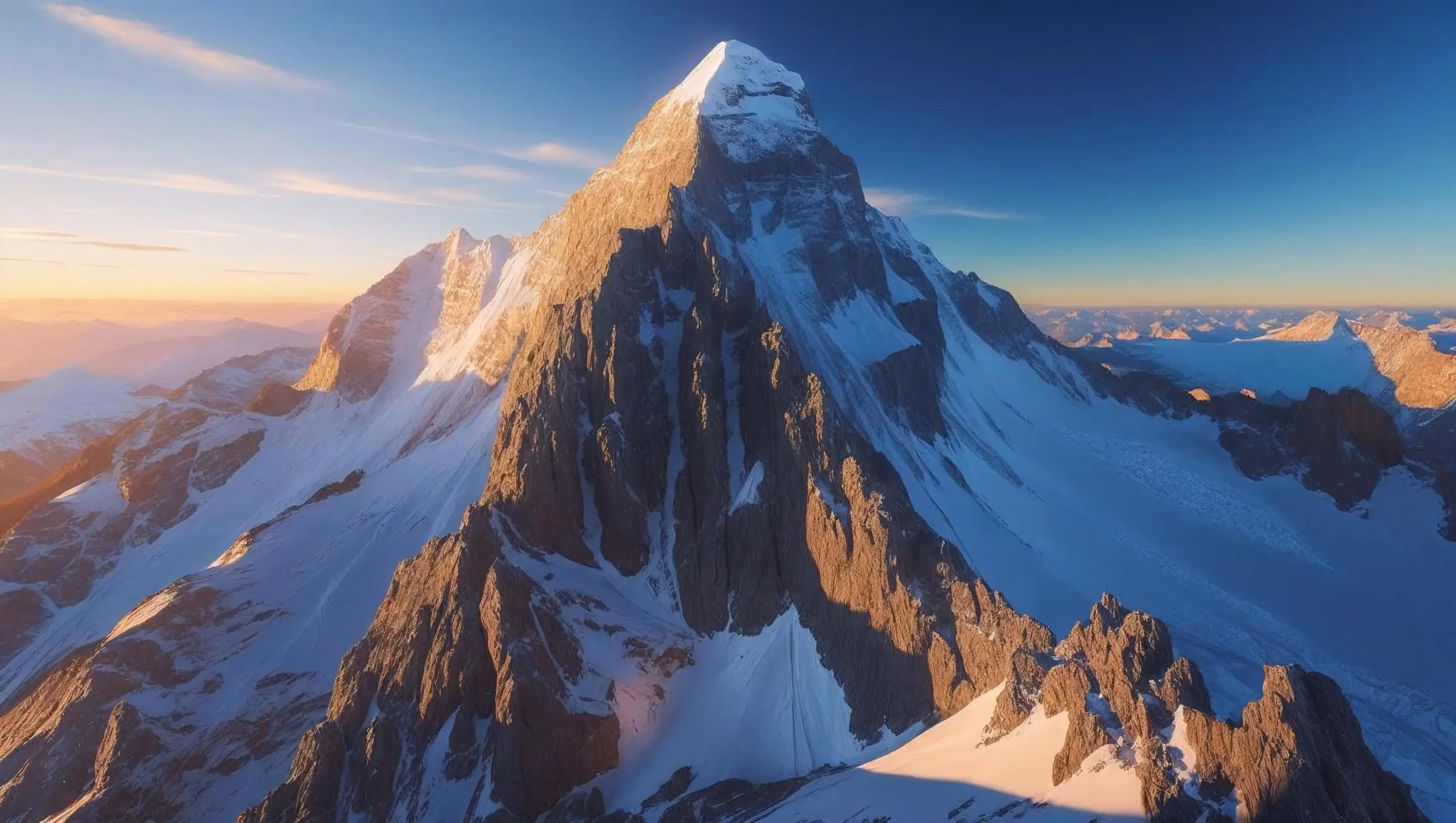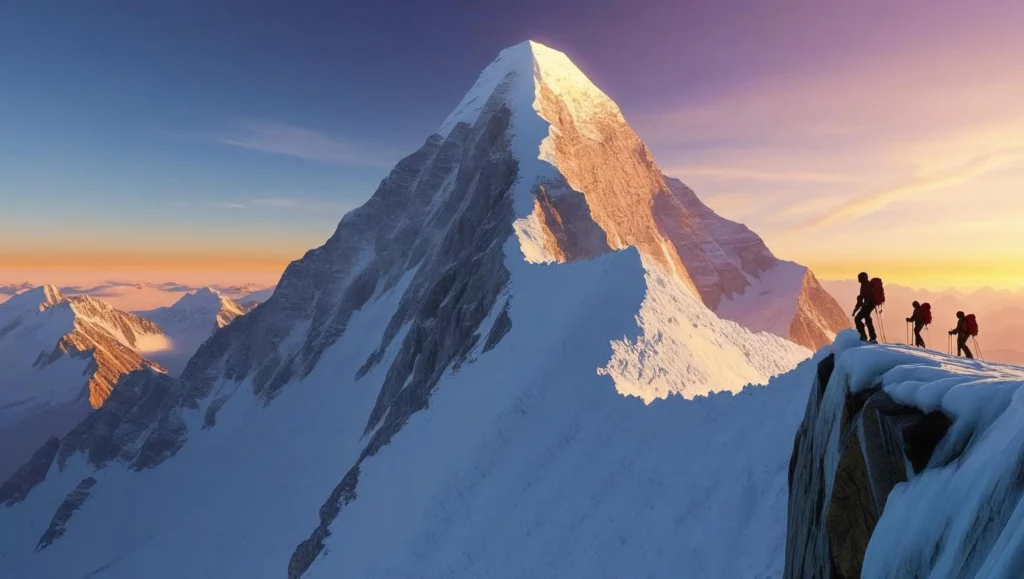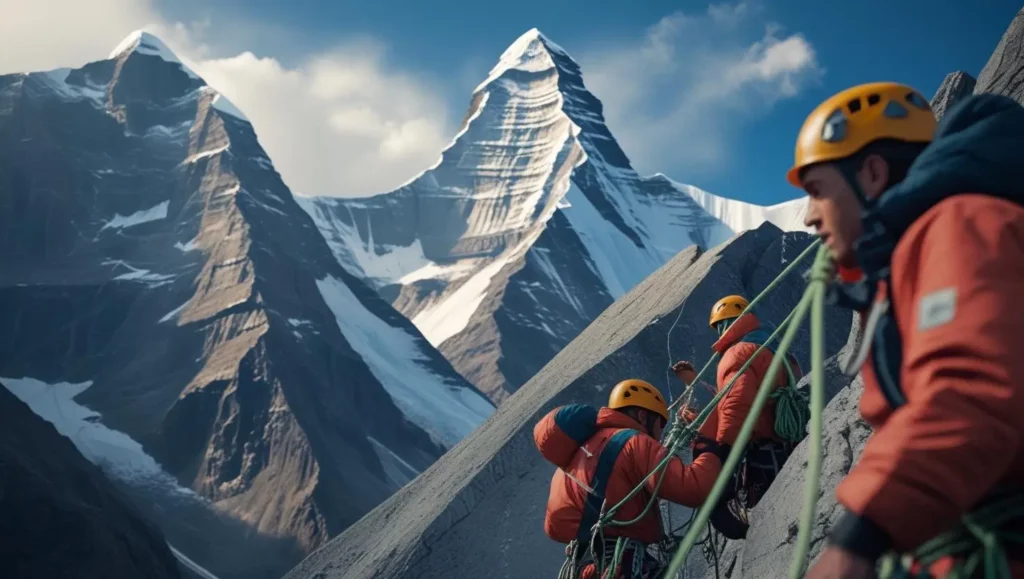Conquer Island Peak: Your Ultimate Guide to Climbing the Majestic Himalayas
Nestled high in the towering Himalayas, Island Peak beckons adventure seekers with its breathtaking vistas and thrilling challenges. This majestic peak, standing proud at 6,189 meters, offers an unforgettable trek that combines awe-inspiring landscapes, rich cultural experiences, and the ultimate test of mountaineering skills. Whether you’re a seasoned climber or a passionate beginner, our ultimate guide to climbing Island Peak equips you with everything you need to conquer this Himalayan gem. From detailed route maps and essential gear checklists to insider tips on acclimatization and safety, we’ll ensure you’re fully prepared for the journey ahead. As you navigate glaciers and summit the formidable apex, you’ll discover not just a peak but a profound connection to the natural world. Join us as we pave the way for your adventure of a lifetime in one of the most stunning environments on Earth. Pack your gear, summon your courage, and let’s embark on the ultimate climbing expedition!

Table of contents
Why Choose Island Peak for Your Climbing Adventure?
Preparing for Your Climb: Essential Gear and Equipment
Best Time to Climb Island Peak
Understanding the Climbing Route and Itinerary
Acclimatization: Importance and Tips
Navigating the Climbing Permits and Regulations
Safety Considerations and Risk Management
Physical and Mental Preparation for the Climb
Why Choose Island Peak for Your Climbing Adventure?
Island Peak, also known as Imja Tse, stands as a beacon for mountaineers seeking an exhilarating yet achievable challenge. Nestled in the heart of the Khumbu region, this peak is a popular choice due to its relatively accessible altitude and the stunning panoramic views it offers. Climbing Island Peak is not just about reaching the summit; it’s about the journey through some of the most breathtaking landscapes on Earth. Imagine trekking through vibrant rhododendron forests, across ancient glaciers, and alongside the world’s tallest mountains, including Everest. Each step reveals the serene beauty of the Himalayas, making the climb as much a spiritual experience as a physical one.
One of the compelling reasons to choose Island Peak is its perfect blend of adventure and accessibility. Standing at
6,189 meters (20,305 feet), it is considered a trekking peak, which means it requires basic mountaineering skills but is not as technically demanding as higher peaks. This makes it an excellent training ground for aspiring climbers aiming to tackle more formidable mountains in the future. Moreover, the climb offers a comprehensive learning experience, from navigating crevasses to using ice axes and crampons, providing a solid foundation in alpine climbing techniques.
Additionally, the cultural richness of the Khumbu region significantly enhances the climbing experience. As you journey through Sherpa villages, you’ll encounter warm hospitality and witness the unique lifestyle of the mountain people. Visiting ancient monasteries, participating in local festivals, and sharing stories with fellow trekkers and climbers add a profound cultural dimension to your adventure. These interactions offer invaluable insights into the resilience and spirituality of the Sherpa community, enriching your overall experience and leaving an indelible mark on your journey.

Preparing for Your Climb: Essential Gear and Equipment
Embarking on an expedition to Island Peak requires meticulous preparation, particularly in terms of gear and equipment. The success of your climb hinges on having the right tools at your disposal, as the Himalayan environment can be unforgiving. To start, investing in high-quality, layered clothing is crucial. The weather in the Himalayas is notoriously unpredictable, with temperatures plummeting rapidly as you gain altitude. Ensure you have moisture-wicking base layers, insulating mid-layers, and a robust outer shell that can withstand wind and snow.
In addition to clothing, your climbing gear must be carefully selected and tested before the expedition. Essential items include a sturdy pair of mountaineering boots designed for cold weather and equipped with crampon compatibility. A reliable pair of crampons and an ice axe are indispensable for navigating icy and steep sections of the climb. Don’t forget a helmet to protect against potential rockfall and a harness for safety during crevasse crossings and glacier travel. A comfortable and durable backpack to carry your gear, along with a sleeping bag rated for extreme cold, are also imperative.
Equally important is your technical equipment. Ensure you have a set of trekking poles, which are invaluable for maintaining balance and reducing strain on your knees during the arduous ascent and descent. A headlamp with extra batteries is essential for early morning summit attempts, and a high-quality water purification system is necessary to ensure you stay hydrated without falling ill from contaminated water sources. Lastly, remember to bring a comprehensive first aid kit, including altitude sickness medication, as well as a reliable communication device for emergencies. Preparing thoroughly with the right gear not only enhances your safety but also significantly increases your chances of a successful and enjoyable climb.
Best Time to Climb Island Peak
Timing your climb to Island Peak is crucial for maximizing both safety and enjoyment. The best seasons for climbing this Himalayan gem are pre-monsoon (spring) and post-monsoon (autumn). Each season offers distinct advantages and unique experiences, so your choice may depend on personal preferences regarding weather and crowd levels.
The spring season, from late March to early June, is particularly popular among climbers. During this time, the weather is relatively stable, and the temperatures are moderate, making it an ideal period for trekking and climbing. The landscape comes alive with blooming rhododendrons and other alpine flowers, painting the trails with vibrant colors. Additionally, the longer daylight hours provide ample time for acclimatization and the actual climb. However, the popularity of this season means you may encounter more trekkers and climbers on the trails, which can lead to crowded campsites and a bustling base camp.
Autumn, from late September to early November, is another excellent time to embark on your Island Peak adventure. The post-monsoon period offers clear skies and stunning vistas, as the summer rains help to clear away the dust and haze. The temperatures are cooler compared to spring, but the crisp, clear air provides unobstructed views of the surrounding peaks. This season is also less crowded, offering a more serene and solitary climbing experience. However, the shorter daylight hours and colder temperatures require careful planning and preparation. Regardless of the season you choose, being well-informed about the weather patterns and preparing accordingly will ensure a successful and memorable climb.

Understanding the Climbing Route and Itinerary
The journey to Island Peak typically begins with a flight to Lukla, a small town that serves as the gateway to the Khumbu region. From Lukla, you will trek through a series of picturesque villages, including Namche Bazaar, Tengboche, Dingboche, and Chhukung. Each of these stops provides opportunities for acclimatization and cultural immersion, as you interact with locals and fellow climbers while gradually ascending towards the base camp.
The itinerary for climbing Island Peak typically spans 15 to 20 days, allowing ample time for acclimatization and rest. A typical day on the mountain starts early, often before dawn, to take advantage of the stable morning weather. Each day involves several hours of trekking or climbing, interspersed with breaks to hydrate, eat, and acclimatize. Nights are spent in teahouses or tents, depending on the altitude and location. The summit day is the most demanding, requiring a pre-dawn start and a long, strenuous ascent to the peak, followed by a careful descent back to high camp or base camp. Understanding the route and itinerary, and pacing yourself accordingly, are essential for a successful and enjoyable climb.
The journey begins with arrival in Kathmandu (Day 01), followed by a preparation and briefing day (Day 02). On Day 03, you’ll take a scenic flight to Lukla (2,860 m) and begin trekking to Phakding (2,610 m). The next day (Day 04) involves a trek through lush forests and across suspension bridges to reach Namche Bazaar (3,440 m), a bustling hub in the Khumbu region. Day 05 is set aside for acclimatization in Namche, with optional hikes to nearby viewpoints such as the Everest View Hotel. On Day 06, the trek continues to Pangboche (3,985 m), where you’ll have incredible views of Ama Dablam and Everest. From there, Day 07 takes you off the main Everest trail and toward the more secluded Ama Dablam Base Camp (4,570 m). Day 08 is a designated rest and acclimatization day at base camp, allowing your body to adjust to the higher altitude in preparation for the ascent ahead. The standard route to the summit of Island Peak follows the South East Flank and South-West Ridge. After reaching the Island Peak Base Camp, located at an altitude of approximately 5,087 meters (16,690 feet), you will spend a night acclimatizing before making your way to the High Camp, situated around 5,600 meters (18,372 feet). The high camp is strategically positioned to offer a shorter and more manageable summit day. From high camp, the ascent involves navigating a steep, rocky slope followed by a challenging glacier traverse. The final section to the summit includes a thrilling climb up a steep snow and ice headwall, requiring the use of fixed ropes and ladders.
Acclimatization: Importance and Tips
Acclimatization is a critical aspect of any high-altitude climb, and Island Peak is no exception. The process of acclimatization allows your body to gradually adjust to the reduced oxygen levels at higher altitudes, minimizing the risk of altitude sickness. Ignoring proper acclimatization can lead to serious health issues, including Acute Mountain Sickness (AMS), High Altitude Pulmonary Edema (HAPE), and High Altitude Cerebral Edema (HACE), all of which can be life-threatening if not addressed promptly.
To effectively acclimatize, it is essential to follow the principle of “climb high, sleep low.” This means ascending to a higher altitude during the day and then descending to a lower altitude to sleep. This practice helps your body adapt to the changing conditions and reduces the risk of altitude-related illnesses. Incorporating rest days into your itinerary is also crucial, allowing your body to recover and adjust before pushing to higher elevations. During these rest days, engaging in light activities such as short hikes can further aid in acclimatization.
Staying well-hydrated and maintaining a balanced diet are also vital for acclimatization. Dehydration can exacerbate the symptoms of altitude sickness, so drinking plenty of fluids is imperative. Additionally, consuming a diet rich in carbohydrates can provide the necessary energy for the physically demanding climb. Monitoring your health and being aware of the symptoms of altitude sickness, such as headaches, nausea, dizziness, and shortness of breath, is crucial. If you or any member of your team experiences severe symptoms, it is important to descend to a lower altitude immediately and seek medical attention. Prioritizing acclimatization not only enhances your chances of reaching the summit but also ensures a safer and more enjoyable climbing experience.
Navigating the Climbing Permits and Regulations
Climbing Ama Dablam requires obtaining several permits and adhering to specific regulations set by the Nepalese government. These permits are essential for ensuring the safety and sustainability of mountaineering activities in the region. Navigating the permit process can be complex, but with proper planning and organization, it can be managed efficiently.
The first permit required is the Ama Dablam climbing permit, issued by the Nepal Mountaineering Association (NMA). The cost of this permit varies depending on the season, with higher fees during the peak climbing months of April, May, October, and November. In addition to the climbing permit, climbers must also obtain a Sagarmatha National Park entry permit, as Ama Dablam is located within the boundaries of this protected area. This permit helps support conservation efforts and the maintenance of the park’s natural environment.
Another important permit is the Trekkers’ Information Management System (TIMS) card, which is mandatory for all trekkers and climbers in Nepal. The TIMS card provides valuable information for tracking and managing the movement of tourists in the region, contributing to safety and emergency response efforts. It is obtained through registered trekking agencies or the Nepal Tourism Board.
In addition to these permits, climbers must also comply with various regulations and guidelines. This includes hiring a licensed guide or liaison officer, who plays a crucial role in ensuring safety and adherence to local regulations. The guide or liaison officer is responsible for coordinating logistics, managing communication with authorities, and providing support throughout the expedition. Furthermore, climbers are required to adhere to environmental guidelines, such as proper waste disposal and minimizing the impact on the local ecosystem.
Navigating the permit process and understanding the regulations is a vital aspect of planning your Ama Dablam expedition. By ensuring all necessary permits are obtained and following the established guidelines, climbers can contribute to the sustainable and responsible practice of mountaineering in the Himalayas, while also enhancing their own safety and experience on the mountain.
Safety Considerations and Risk Management
Safety is paramount when undertaking any mountaineering expedition, and climbing Island Peak is no exception. The harsh and unpredictable conditions of the Himalayas necessitate a comprehensive approach to risk management. One of the primary safety considerations is the weather. The weather in the high mountains can change rapidly, with clear skies giving way to storms in a matter of hours. It is essential to stay informed about the latest weather forecasts and be prepared to adjust your plans accordingly. Having contingency days built into your itinerary can provide the flexibility needed to wait out bad weather and attempt the summit under safer conditions.
Another critical safety aspect is the assessment and management of potential hazards along the climbing route. This includes being vigilant about crevasses, avalanche-prone areas, and unstable rock sections. Utilizing appropriate safety equipment, such as ropes, harnesses, and helmets, is crucial for navigating these hazards. Engaging the services of experienced guides and Sherpas can greatly enhance your safety, as they possess invaluable knowledge of the terrain and can provide expert guidance on route finding and hazard management.
Physical fitness and health are also key components of safety in high-altitude climbing. Preparing your body through rigorous training that includes cardiovascular exercises, strength training, and endurance building is essential for coping with the physical demands of the climb. Additionally, undergoing a thorough medical check-up before the expedition ensures that you are in optimal health and capable of handling the strenuous activity. Carrying a well-stocked first aid kit and being knowledgeable about basic first aid procedures can make a significant difference in managing injuries and illnesses on the mountain. By prioritizing safety and taking a proactive approach to risk management, you can significantly enhance the likelihood of a successful and incident-free climb.

Physical and Mental Preparation for the Climb
The physical demands of climbing Island Peak require a dedicated and comprehensive training regimen. Preparing your body for the rigors of high-altitude mountaineering involves a mix of cardiovascular conditioning, strength training, and endurance exercises. Cardiovascular fitness is crucial for maintaining stamina during long days of trekking and climbing. Activities such as running, cycling, and swimming can help build the necessary cardiovascular endurance. Incorporating interval training and hill workouts can further enhance your ability to handle the steep and varied terrain of the Himalayas.
Strength training is equally important, as it helps build the muscle power needed to carry a heavy backpack, climb steep slopes, and navigate challenging terrain. Focus on exercises that target the major muscle groups, including the legs, core, and upper body. Squats, lunges, deadlifts, and planks are effective exercises for building the necessary strength. Additionally, practicing with a loaded backpack can simulate the conditions you’ll face on the mountain and help your body adapt to the added weight.
Mental preparation is just as vital as physical training. The psychological challenges of high-altitude climbing, such as dealing with fatigue, discomfort, and the mental strain of pushing through difficult conditions, require a resilient and positive mindset. Techniques such as visualization, meditation, and mindfulness can help build mental toughness and reduce anxiety. Visualizing yourself successfully navigating the climb and reaching the summit can boost your confidence and motivation. Practicing mindfulness and meditation can enhance your ability to stay focused and calm in stressful situations. Building a support network of fellow climbers, friends, and family can also provide encouragement and motivation throughout your training and the climb itself. By preparing both physically and mentally, you set yourself up for a successful and fulfilling ascent of Island Peak.

Local Culture and Environmental Considerations
Embarking on a journey to Island Peak offers a unique opportunity to immerse yourself in the rich culture of the Khumbu region. The Sherpa community, known for their mountaineering prowess and warm hospitality, plays a central role in the cultural experience. As you trek through Sherpa villages, you’ll have the chance to visit ancient monasteries, observe traditional rituals, and interact with locals. Learning about the Sherpa way of life, their spiritual beliefs, and their deep connection to the mountains adds a profound dimension to your adventure. Engaging respectfully with the local culture, including learning a few basic phrases in the Sherpa language, can enhance your experience and foster meaningful connections.
Environmental considerations are equally important when climbing in the Himalayas. The fragile ecosystems of the high mountains are particularly vulnerable to the impacts of human activity. Practicing Leave No Trace principles is essential to minimize your environmental footprint. This includes packing out all trash, avoiding the use of single-use plastics, and being mindful of your water usage. Using biodegradable soap and ensuring that all waste is properly disposed of helps preserve the pristine environment for future generations.
Supporting local conservation efforts and initiatives can also make a positive impact. Many organizations in the Khumbu region work towards protecting the environment and promoting sustainable tourism practices. Contributing to these efforts, whether through donations or volunteer work, can help ensure the long-term preservation of the region’s natural beauty. Additionally, choosing eco-friendly trekking and climbing operators who prioritize sustainability and responsible tourism practices can further support these goals. By being mindful of the cultural and environmental aspects of your journey, you not only enrich your own experience but also contribute to the well-being of the local community and the preservation of the majestic Himalayas.
Conclusion: Your Journey Awaits
Conquering Island Peak is more than just a mountaineering achievement; it is a journey of self-discovery, cultural immersion, and environmental stewardship. As you stand at the summit, gazing at the panoramic views of the towering peaks around you, you realize that the climb is not just about reaching the top but about the experiences and lessons learned along the way. Each step you take, each challenge you overcome, and each moment of awe and wonder contribute to a transformative adventure that stays with you long after you descend back to the valley.
The preparation, from selecting the right gear to rigorous physical training and mental fortitude, lays the foundation for a successful climb. Understanding the route, acclimatizing properly, and prioritizing safety ensures that you can navigate the challenges of the mountain with confidence. Embracing the local culture and respecting the environment enriches your journey, leaving a positive impact on the community and the natural world around you.
As you prepare to embark on this extraordinary expedition, remember that every aspect of the climb, from the initial planning stages to the final ascent, is an integral part of the adventure. Embrace the journey with an open heart and a spirit of exploration. Island Peak awaits, ready to offer you an unforgettable experience in one of the most stunning and awe-inspiring environments on Earth. Pack your gear, summon your courage, and let the Himalayas unveil their magic as you embark on the ultimate climbing expedition. Your journey of a lifetime is just a step away.
